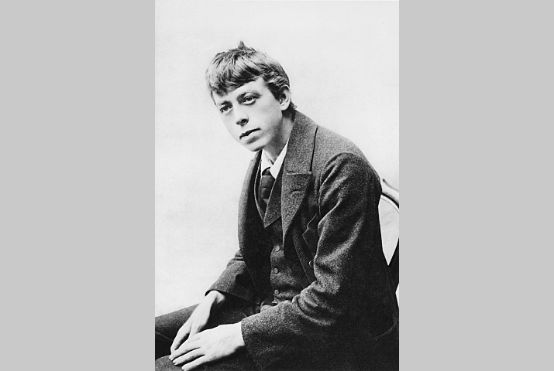Robert Walser set to music
Roman Brotbeck tells and analyzes in ever new ways how Walser's poetry was put to music from 1912 to 2021.

One would like to know how the wanderer Schoeck would have set the texts of the stroller Walser, his contemporary, to music. But apparently they did not notice each other, just as the non-reception of some Swiss art seems to be inherent. In any case, the intensive reception of Walser by musicians only began long after his death - although there are exceptions. And Roman Brotbeck tells of these in the first chapters of his thick book: how a forgotten Berlin composer and critic (James Simon) set two poems to music as early as 1912. How a choirmaster working in Biel (Wilhelm Arbenz) found a different tone with three songs. How a composer who immigrated to Switzerland (Wladimir Vogel) misunderstood Walser's texts and transformed them into an artist's drama. It was only with Urs Peter Schneider that a continuous and highly fruitful preoccupation with Walser began, in this case extending over half a century and giving rise to a veritable, extremely multifaceted cosmos.
Brotbeck tells these stories of reception in a well-founded manner. He analyzes, but not in a bean-counting way. Instead, he lets the details speak for themselves and works out the contexts. Of course, this is hardly enough to capture the sheer exponentially growing number of Walser settings. Brotbeck therefore varies the presentation in an inventive way, so that the reader does not tire of reading the list, but continues with curiosity. Individual chapters are devoted, for example, to Heinz Holliger, the most prominent composer of musical settings, and to the Greco-Frenchman Georges Aperghis, who worked with Walser, Paul Klee and Adolf Wölfli during his time in Bern. One chapter each deals with operas based on Walser novels and other dramatizations. Brotbeck then picks out a single poem, the short "Beiseit", and presents it in 21 settings. And so on. The final point is set by unperformed/unrealized projects by Johannes Fritsch and Hans Zender.
Behind this is - otherwise it would be boring and one would only use this book as a reference work - an immense wealth of analytical methods, which access the purely musical level, but also shed light on the relationships to the word, illuminate the dramatizations with their backgrounds and finally also include Walser himself. The poet as "his own composer": the opening chapter is dedicated to this theme. Sequences of sounds, polyphonic constellations, intricate rhythms can be found in the texts, showing Walser as an extremely conscious, listening designer - despite the seemingly casual lightness that his texts always have.
The publication, which was supported by the Swiss National Science Foundation, is therefore a compendium that no one researching Walser settings in the future will be able to avoid. Naturally, it cannot be complete, as Walser continues to be set to music, and there may still be discoveries to be made in the past. Shortly before going to press, Brotbeck received a reference to a song that the illustrator and amateur composer Marcus Brehmer once even played and sang to the brothers Karl and Robert Walser in Berlin, which, as he writes, "created a wonderfully sublime, quite unearthly mood of togetherness". The song seems to have been lost, but we can imagine its effect in the most beautiful way.
Roman Brotbeck: Sounds and sounds. Robert Walser-Vertonungen 1912 bis 2021, 660 p., € 79.00, Brill Fink, Paderborn 2022, ISBN 978-3-7705-6686-0, Open Access









